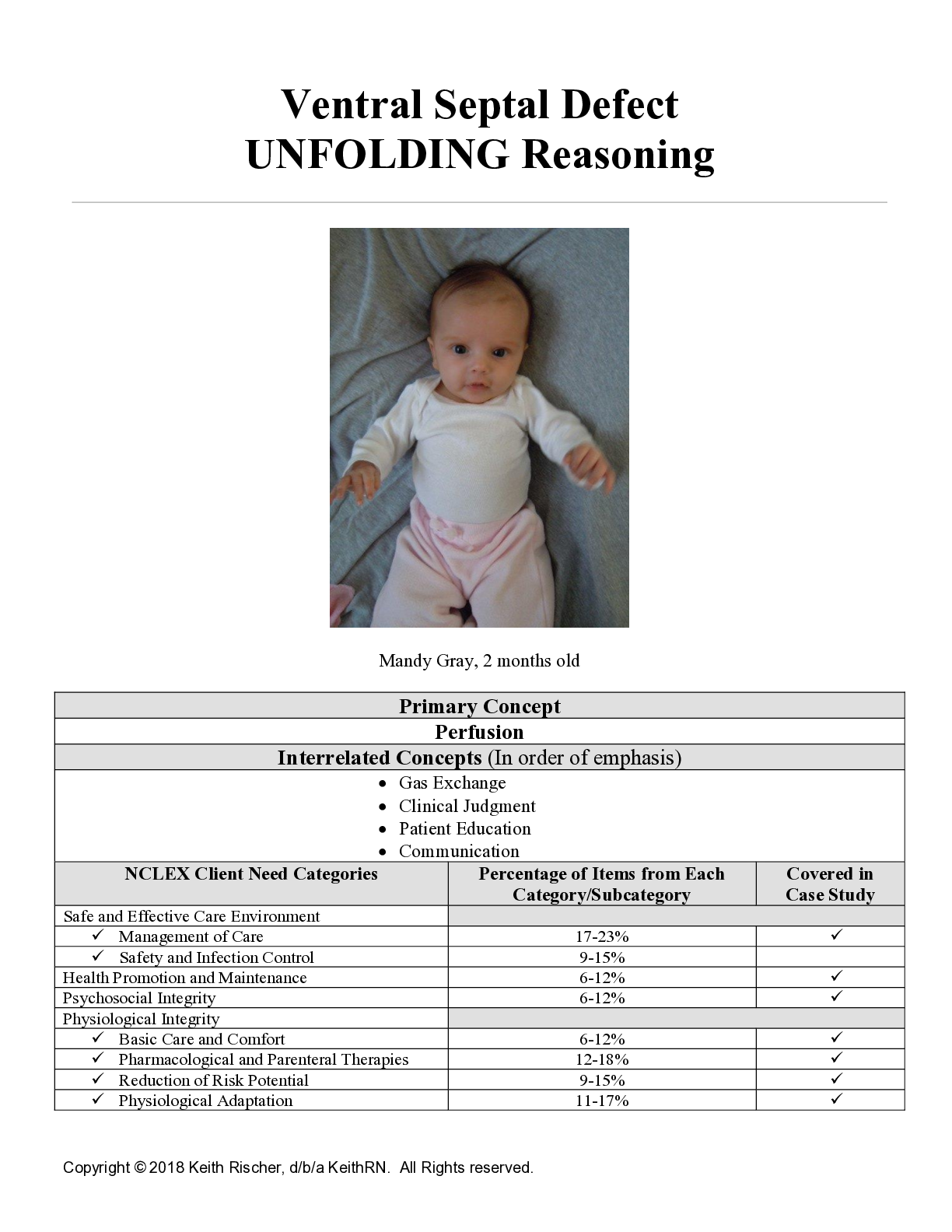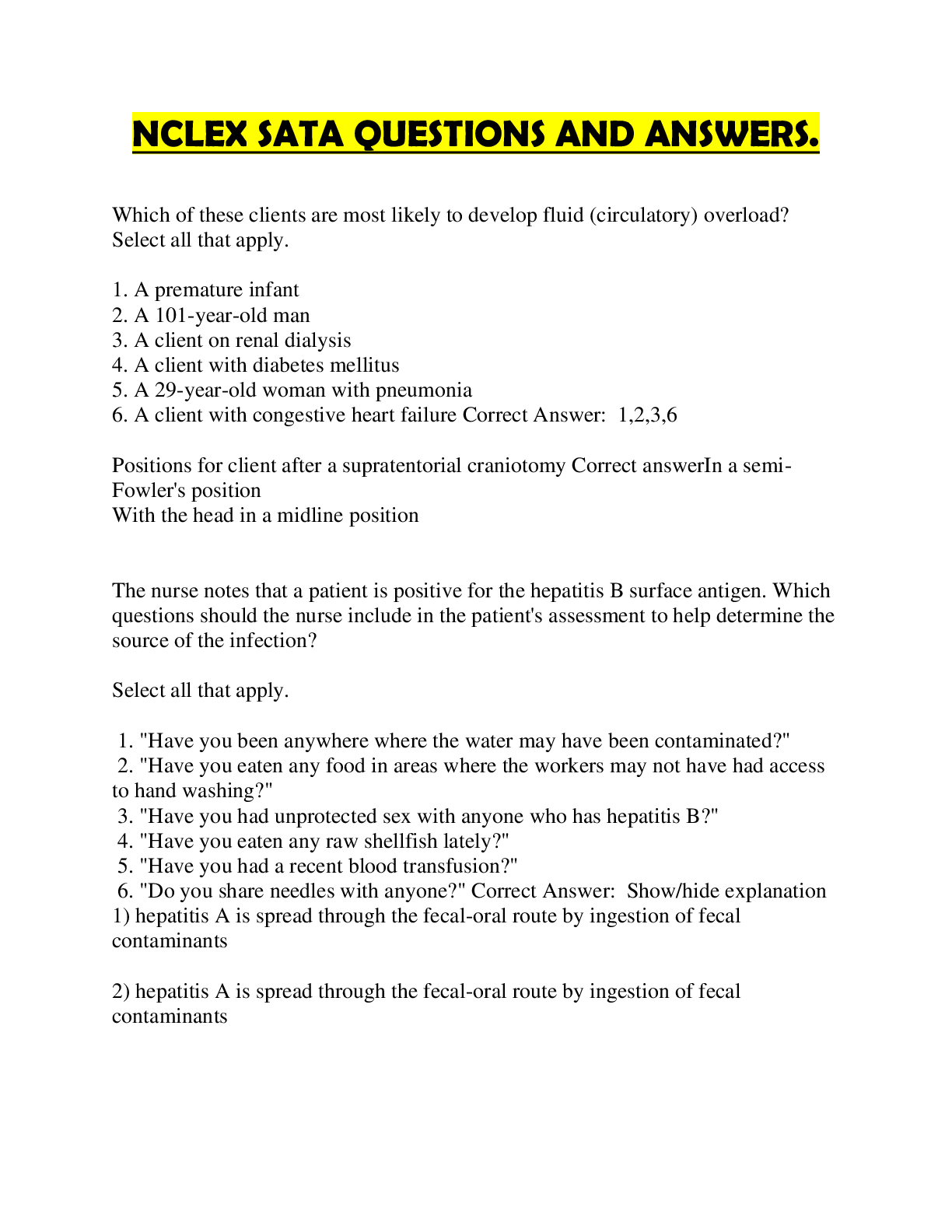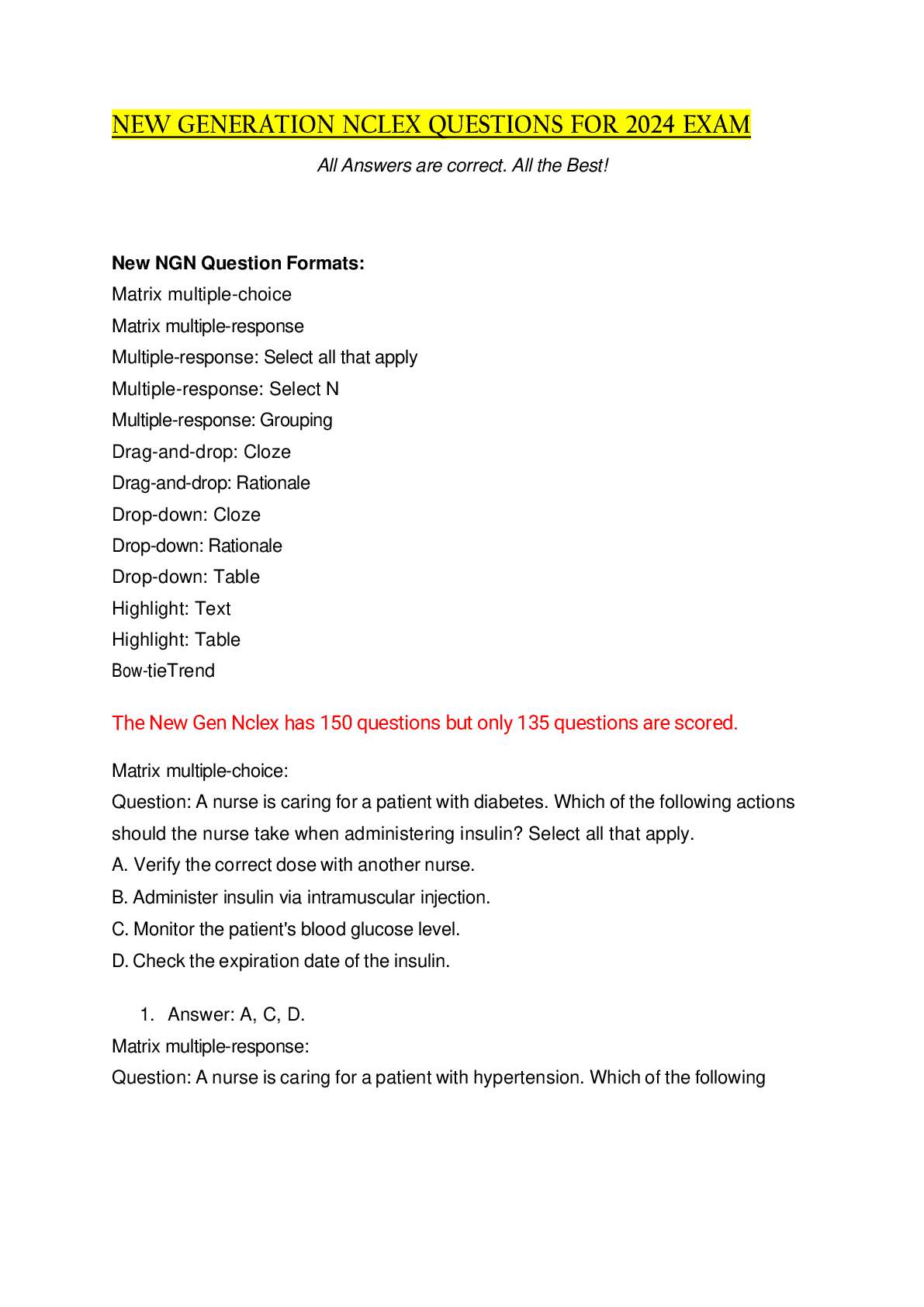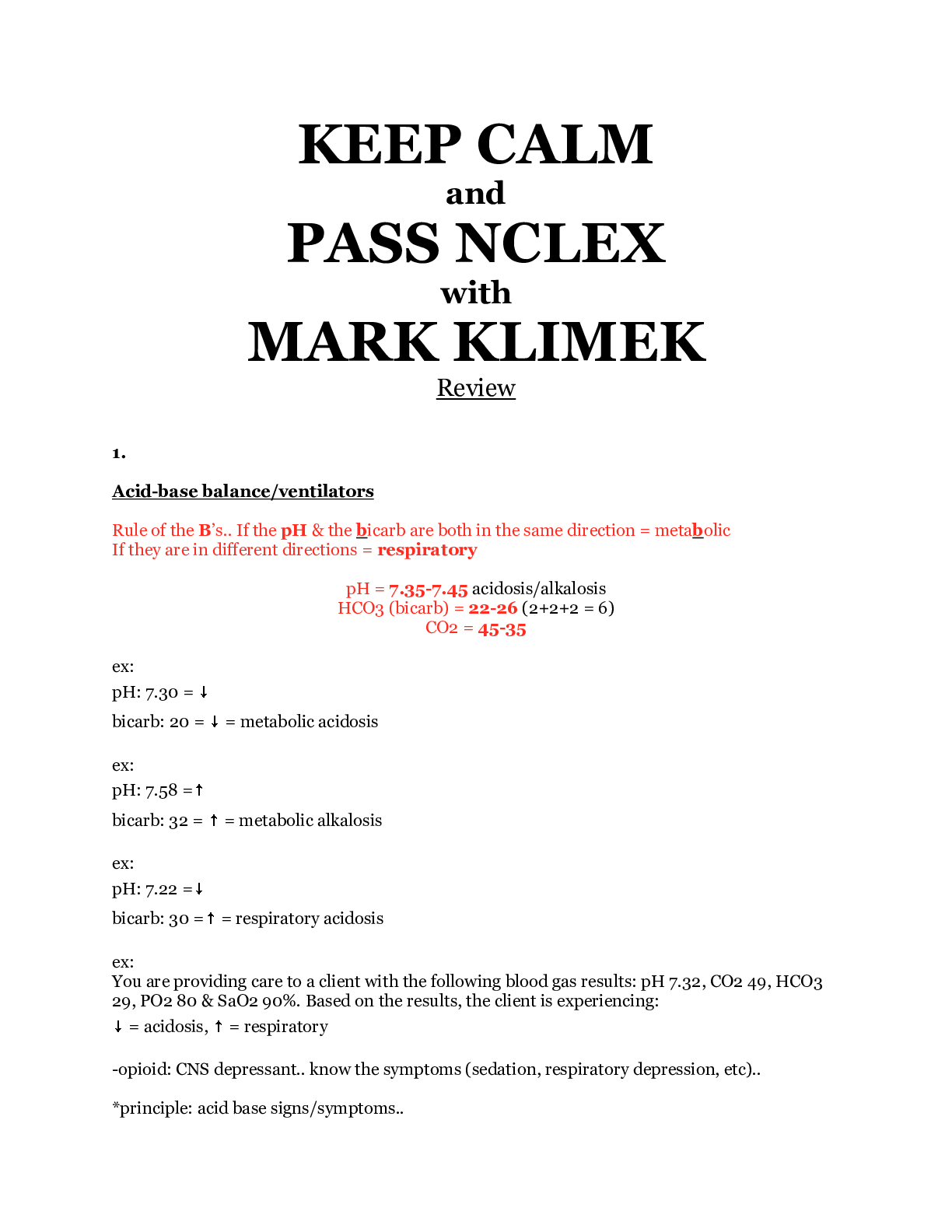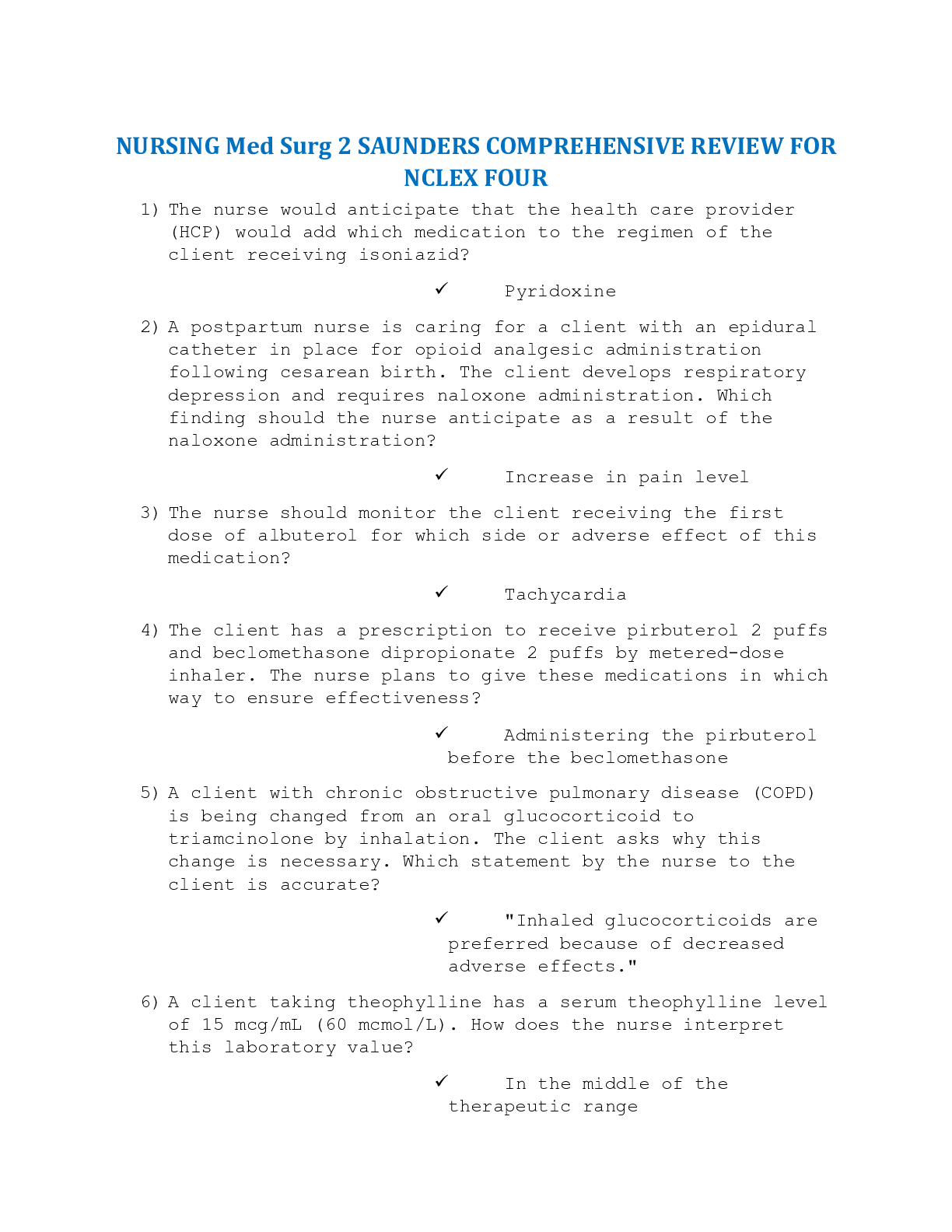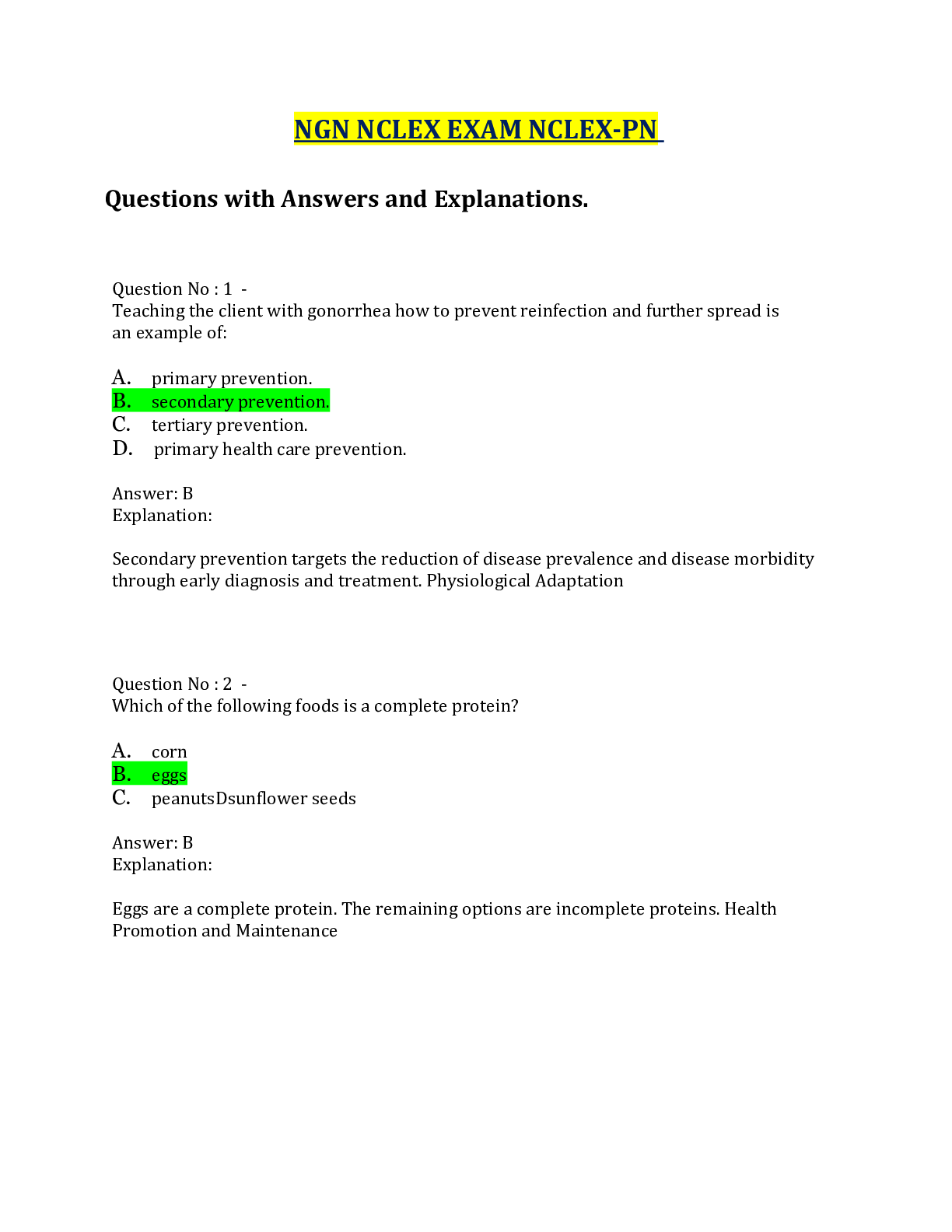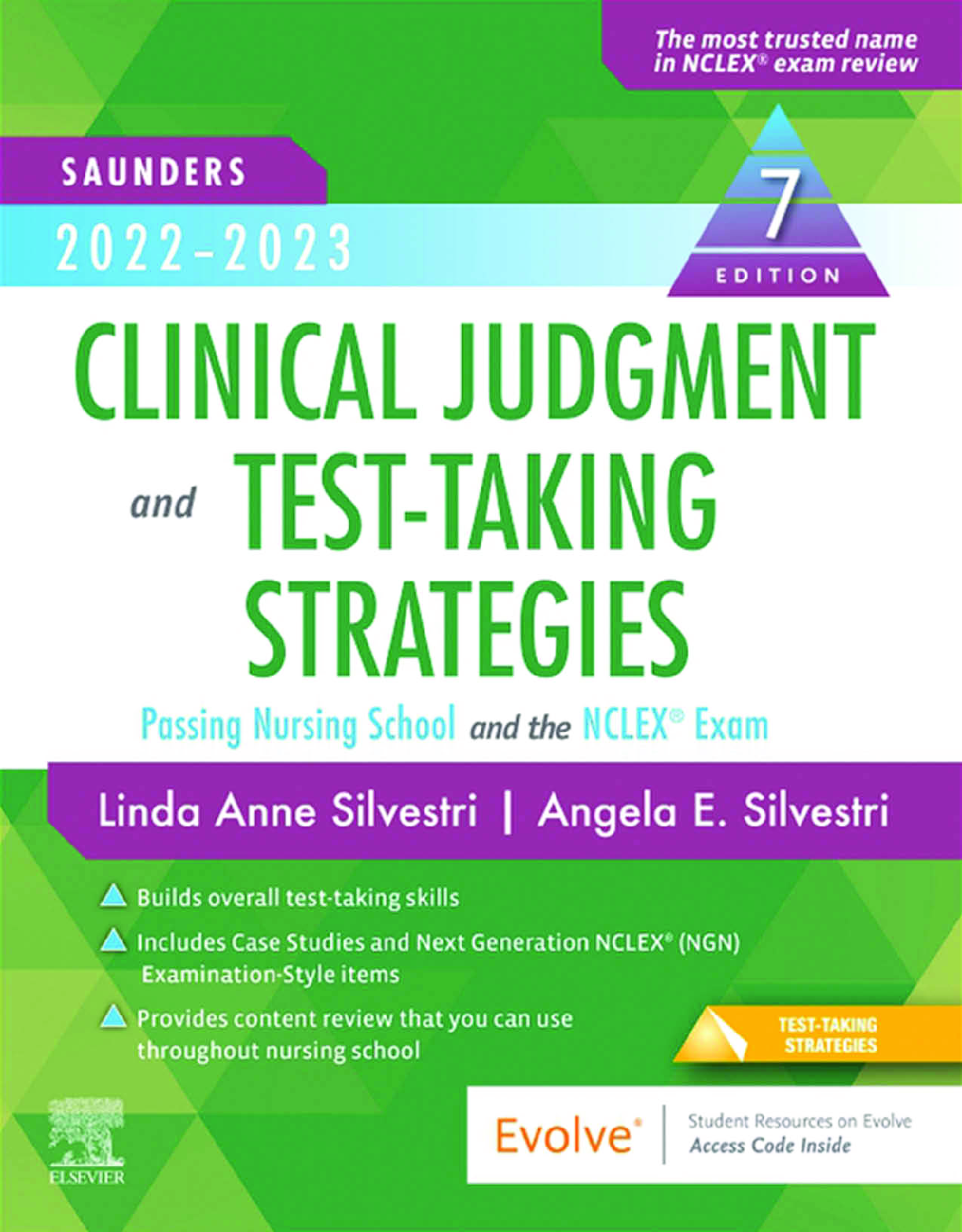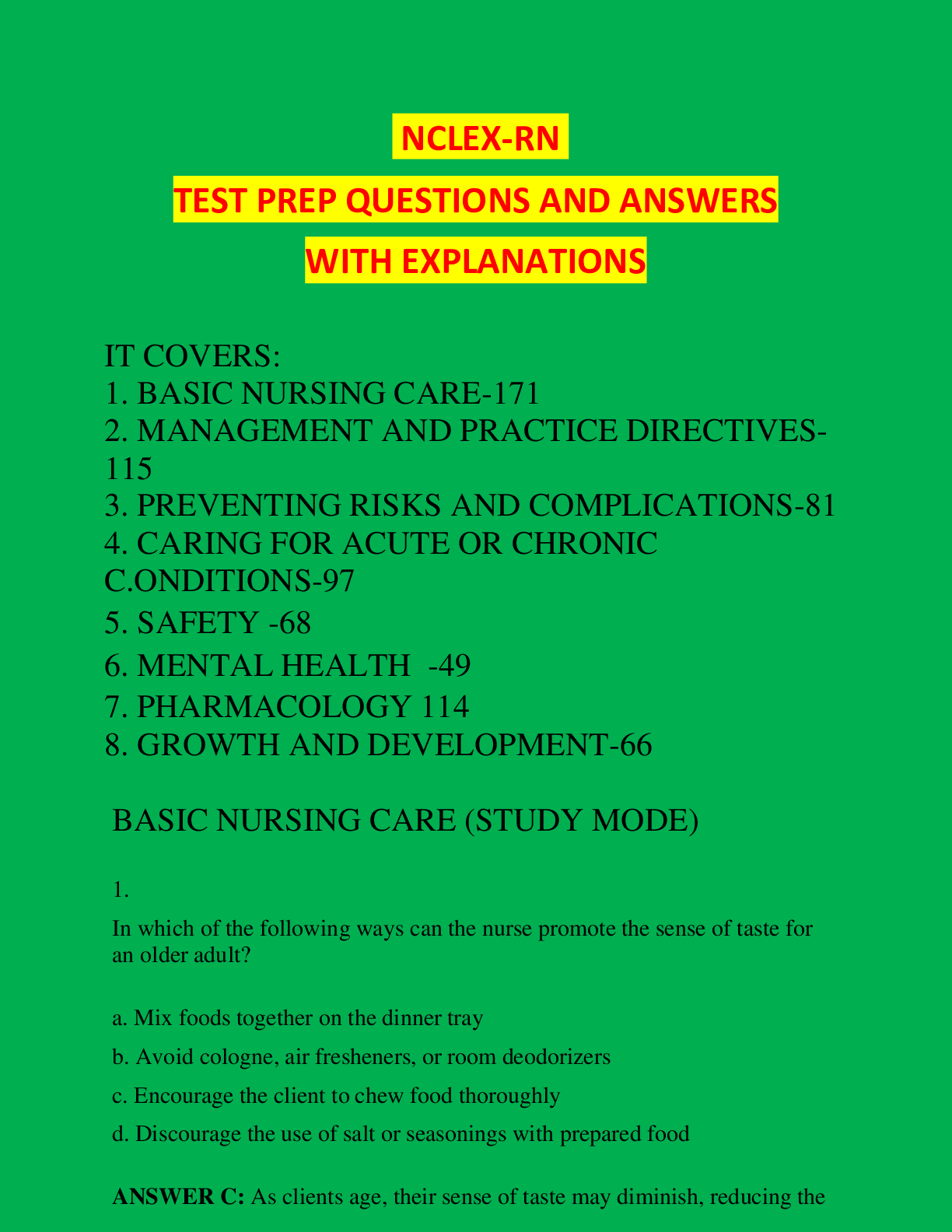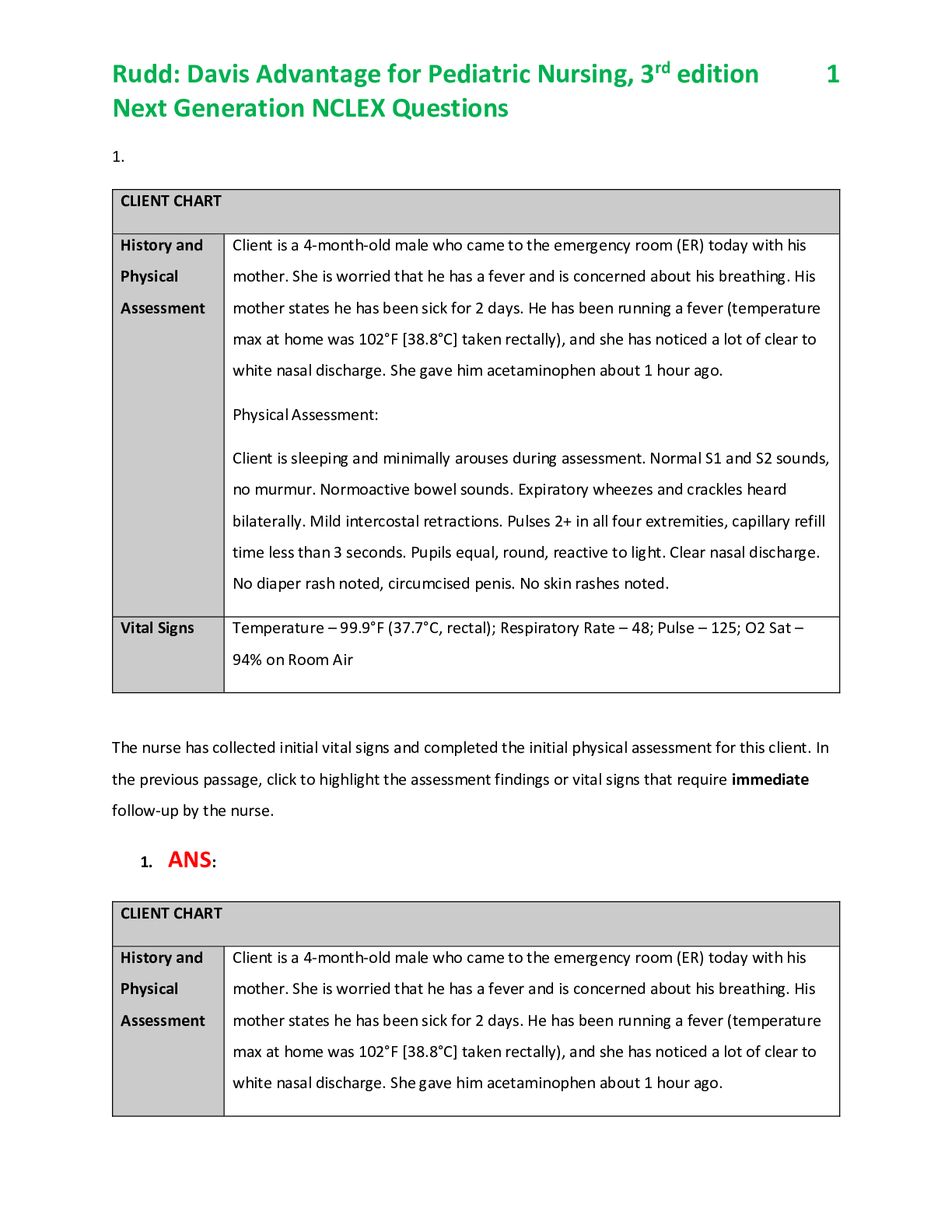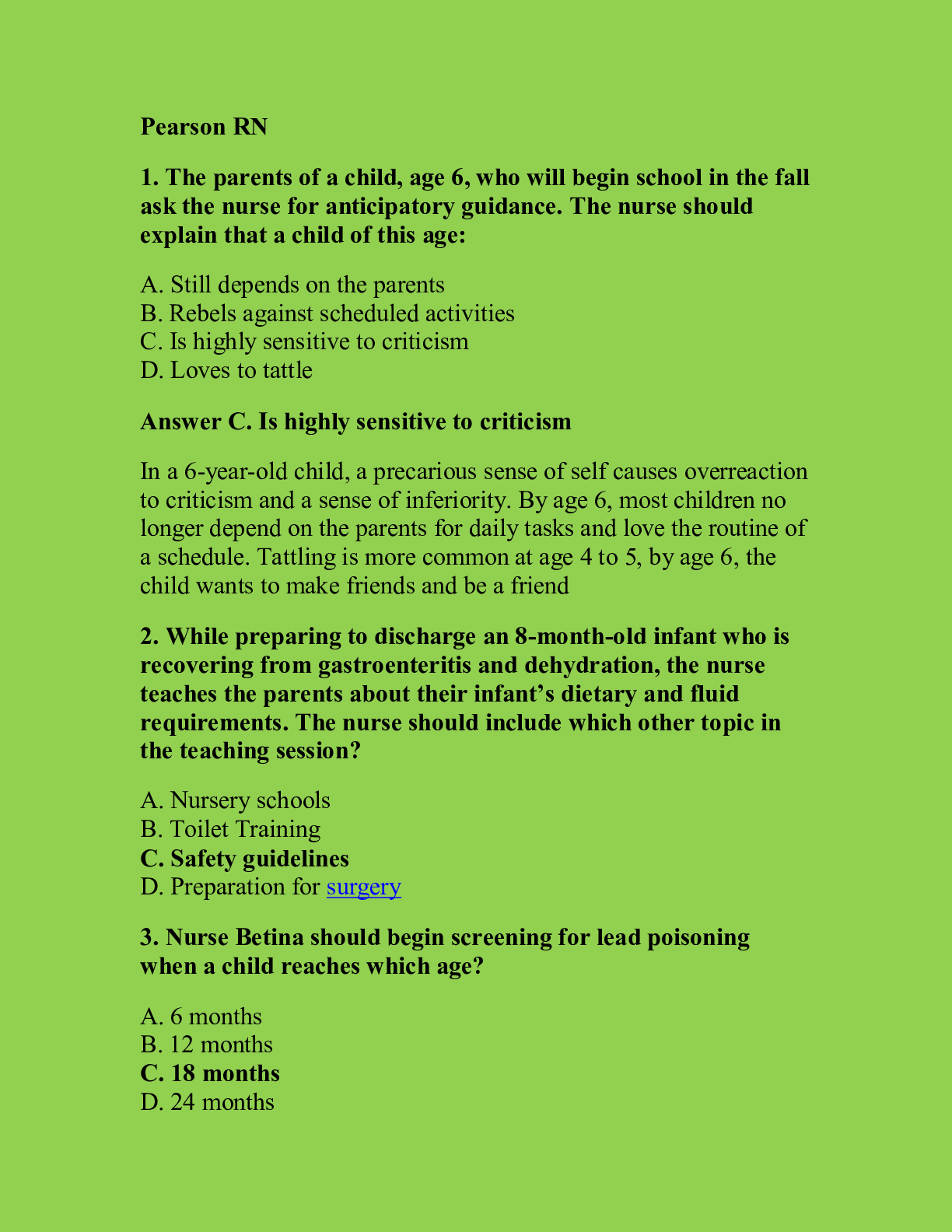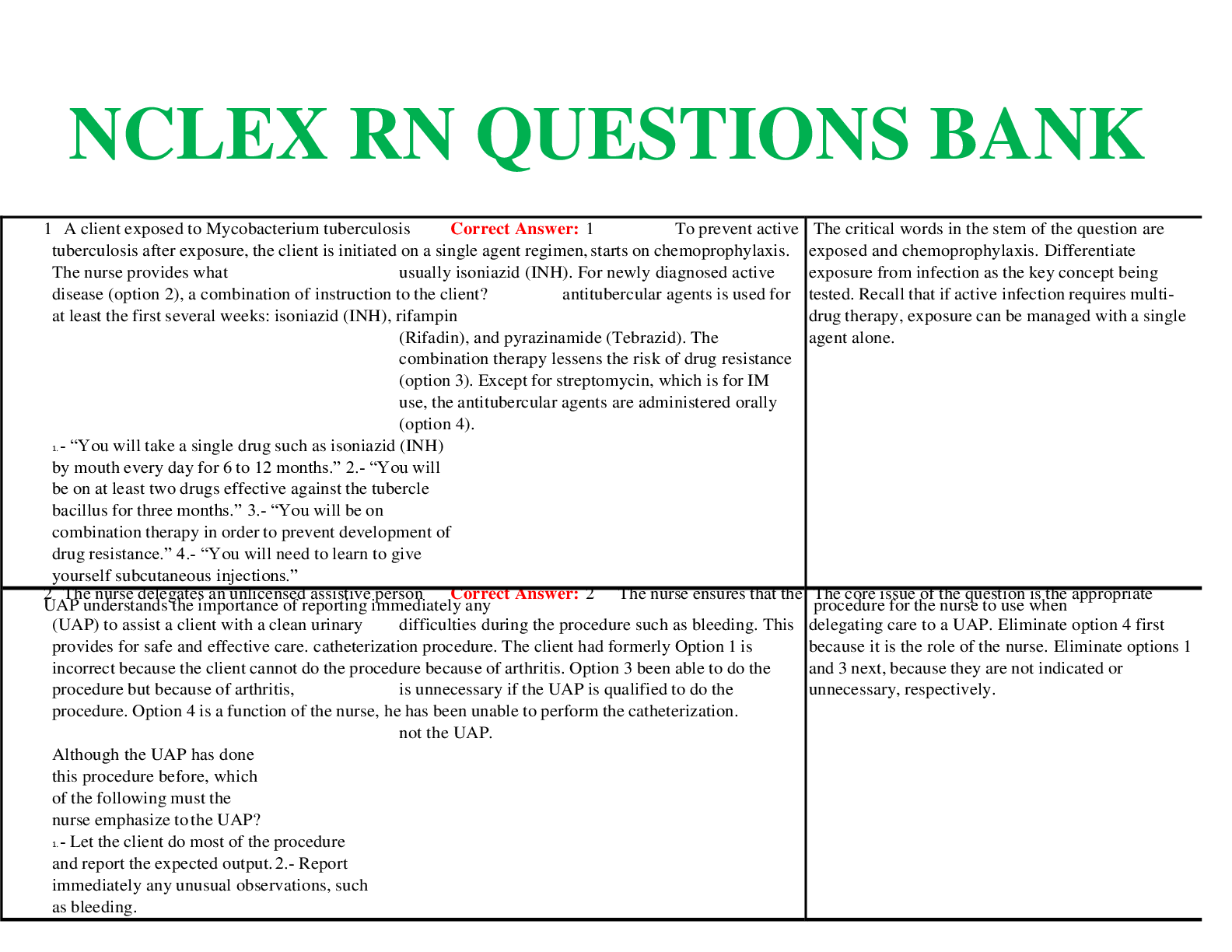*NURSING > NCLEX > NCLEX Practice Exam 3 (40 items) | GRADED A Questions and Answers | 100% Guaranteed Pass (All)
NCLEX Practice Exam 3 (40 items) | GRADED A Questions and Answers | 100% Guaranteed Pass
Document Content and Description Below
NCLEX Practice Exam 3 (40 Items) A patient is admitted to the hospital with a diagnosis of primary hyperparathyroidism. A nurse checking the patient’s lab results would expect which of the follow... ing changes in laboratory findings? Low serum parathyroid hormone (PTH). Low urine calcium. A patient with Addison’s disease asks a nurse for nutrition and diet advice. Which of the following diet modifications is NOT recommended? A diet with adequate caloric intake. A restricted sodium diet. A patient with a history of diabetes mellitus is on the second post-operative day following cholecystectomy. She has complained of nausea and isn’t able to eat solid foods. The nurse enters the room to find the patient confused and shaky. Which of the following is the most likely explanation for the patient’s symptoms? Hyperglycemia. Diabetic ketoacidosis. A nurse assigned to the emergency department evaluates a patient who underwent fiberoptic colonoscopy 18 hours previously. The patient reports increasing abdominal pain, fever, and chills. Which of the following conditions poses the most immediate concern? Viral gastroenteritis Diverticulitis A patient is admitted to the same day surgery unit for liver biopsy. Which of the following laboratory tests assesses coagulation? (Select all that apply) Prothrombin time Hemoglobin A nurse is assessing a clinic patient with a diagnosis of hepatitis A. Which of the following is the most likely route of transmission? Contaminated food Illegal drug use A leukemia patient has a relative who wants to donate blood for transfusion. Which of the following donor medical conditions would prevent this? Cholecystitis requiring cholecystectomy one year previously. Crohn’s disease in remission. A physician has diagnosed acute gastritis in a clinic patient. Which of the following medications would be contraindicated for this patient? Calcium carbonate. Furosemide (Lasix). The nurse is conducting nutrition counseling for a patient with cholecystitis. Which of the following information is important to communicate? The patient must maintain a high protein/low carbohydrate diet. The patient should limit fatty foods. A patient admitted to the hospital with myocardial infarction develops severe pulmonary edema. Which of the following symptoms should the nurse expect the patient to exhibit? Stridor Air hunger A nurse caring for several patients on the cardiac unit is told that one is scheduled for implantation of an automatic internal cardioverter-defibrillator. Which of the following patients is most likely to have this procedure? A post-operative coronary bypass patient, recovering on schedule. A patient with a history of atrial tachycardia and fatigue. A patient is scheduled for a magnetic resonance imaging (MRI) scan for suspected lung cancer. Which of the following is a contraindication to the study for this patient? The patient has a pacemaker The patient takes anti-psychotic medication A nurse calls a physician with the concern that a patient has developed a pulmonary embolism. Which of the following symptoms has the nurse most likely observed? The patient suddenly complains of chest pain and shortness of breath. The patient has a fever, chills, and loss of appetite A patient comes to the emergency department with abdominal pain. Work-up reveals the presence of a rapidly enlarging abdominal aortic aneurysm. Which of the following actions should the nurse expect? The patient will be admitted to the day surgery unit for sclerotherapy The patient will be discharged home to follow-up with his cardiologist in 24 hours A patient with leukemia is receiving chemotherapy that is known to depress bone marrow. A CBC (complete blood count) reveals a platelet count of 25,000/microliter. Which of the following actions related specifically to the platelet count should be included in the nursing care plan? Require visitors to wear respiratory masks and protective clothing Check for signs of bleeding, including examination of urine and stool for blood A nurse in the emergency department is observing a 4-year-old child for signs of increased intracranial pressure after a fall from a bicycle, resulting in head trauma. Which of the following signs or symptoms would be cause for concern? Repeated vomiting Inability to read short words from a distance of 18 inches A nonimmunized child appears at the clinic with a visible rash. Which of the following observations indicates the child may have rubeola (measles)? The rash begins on the trunk and spreads outward The lesions have a "teardrop-on-a-rose-petal" appearance. A child is seen in the emergency department for scarlet fever. Which of the following descriptions of scarlet fever is NOT correct? “Strawberry tongue” is a characteristic sign. The pharynx is red and swollen. A child weighing 30 kg arrives at the clinic with diffuse itching as the result of an allergic reaction to an insect bite. Diphenhydramine (Benadryl) 25 mg 3 times a day is prescribed. The correct pediatric dose is 5 mg/kg/day. Which of the following best describes the prescribed drug dose? The dose is too low. The dose should be increased or decreased, depending on the symptoms. Question 19 Explanation: The mother of a 2-month-old infant brings the child to the clinic for a well-baby check. She is concerned because she feels only one testis in the scrotal sac. Which of the following statements about the undescended testis is the most accurate? The infant will likely require surgical intervention Normally, the testes descend by one year of age A child is admitted to the hospital with a diagnosis of Wilms tumor, stage II. Which of the following statements most accurately describes this stage? The tumor did not extend beyond the kidney and was completely resected The tumor has spread into the abdominal cavity and cannot be resected Question 21 Explanation: A teen patient is admitted to the hospital by his physician who suspects a diagnosis of acute glomerulonephritis. Which of the following findings is consistent with this diagnosis? Note: More than one answer may be correct. Urine output of 350 ml in 24 hours. Generalized edema. Which of the following conditions most commonly causes acute glomerulonephritis? Prior infection with group A Streptococcus within the past 10-14 days Nephrotic syndrome An infant with hydrocele is seen in the clinic for a follow-up visit at 1 month of age. The scrotum is smaller than it was at birth, but fluid is still visible on illumination. Which of the following actions is the physician likely to recommend? Referral to a surgeon for repair. Keeping the infant in a flat, supine position until the fluid is gone. A nurse is caring for a patient with peripheral vascular disease (PVD). The patient complains of burning and tingling of the hands and feet and cannot tolerate touch of any kind. Which of the following is the most likely explanation for these symptoms? Fluid overload leading to compression of nerve tissue. Inflammation of the skin on the hands and feet. A patient in the cardiac unit is concerned about the risk factors associated with atherosclerosis. Which of the following are hereditary risk factors for developing atherosclerosis? Overweight. Age. Claudication is a well-known effect of peripheral vascular disease. Which of the following facts about claudication is correct? Select all that apply: It is characterized by pain that often occurs during rest. It is characterized by cramping and weakness. A nurse is providing discharge information to a patient with peripheral vascular disease. Which of the following information should be included in instructions? Use a heating pad to keep feet warm Use antibacterial ointment to treat skin lesions at risk of infection A patient who has been diagnosed with vasospastic disorder (Raynaud’s disease) complains of cold and stiffness in the fingers. Which of the following descriptions is most likely to fit the patient? An elderly woman. An elderly man. A 23-year-old patient in the 27th week of pregnancy has been hospitalized on complete bed rest for 6 days. She experiences sudden shortness of breath, accompanied by chest pain. Which of the following conditions is the most likely cause of her symptoms? Pulmonary embolism due to deep vein thrombosis (DVT). Congestive heart failure due to fluid overload. Thrombolytic therapy is frequently used in the treatment of suspected stroke. Which of the following is a significant complication associated with thrombolytic therapy? Cerebral hemorrhage. Resolution of the clot. An infant is brought to the clinic by his mother, who has noticed that he holds his head in an unusual position and always faces to one side. Which of the following is the most likely explanation? Craniosynostosis, with premature closure of the cranial sutures. Hydrocephalus, with increased head size. An adolescent brings a physician’s note to school stating that he is not to participate in sports due to a diagnosis of Osgood-Schlatter disease. Which of the following statements about the disease is correct? The student will most likely require surgical intervention. The student is trying to avoid participation in physical education. The clinic nurse asks a 13-year-old female to bend forward at the waist with arms hanging freely. Which of the following assessments is the nurse most likely conducting? Leg length disparity Scoliosis A clinic nurse interviews a parent who is suspected of abusing her child. Which of the following characteristics is the nurse LEAST likely to find in an abusing parent? Unemployment. Single status. A nurse is assigned to the pediatric rheumatology clinic and is assessing a child who has just been diagnosed with juvenile idiopathic arthritis. Which of the following statements about the disease is most accurate? Most children progress to adult rheumatoid arthritis. Physical activity should be minimized. A child is admitted to the hospital several days after stepping on a sharp object that punctured her athletic shoe and entered the flesh of her foot. The physician is concerned about osteomyelitis and has ordered parenteral antibiotics. Which of the following actions is done immediately before the antibiotic is started? A blood culture is drawn. The parents arrive. A two-year-old child has sustained an injury to the leg and refuses to walk. The nurse in the emergency department documents swelling of the lower affected leg. Which of the following does the nurse suspect is the cause of the child’s symptoms? Bruising of the gastrocnemius muscle. No anatomic injury, the child wants his mother to carry him. A toddler has recently been diagnosed with cerebral palsy. Which of the following information should the nurse provide to the parents? Note: More than one answer may be correct. Cerebral palsy is caused by injury to the upper motor neurons and results in motor dysfunction, as well as possible ocular and speech difficulties. Parent support groups are helpful for sharing strategies and managing health care issues. A child has recently been diagnosed with Duchenne’s muscular dystrophy. The parents are receiving genetic counseling prior to planning another pregnancy. Which of the following statements includes the most accurate information? Duchenne’s is an X-linked recessive disorder, so both daughters and sons have a 50% chance of developing the disease. Sons only have a 1 in 4 (25%) chance of developing the disorder. [Show More]
Last updated: 1 year ago
Preview 1 out of 20 pages
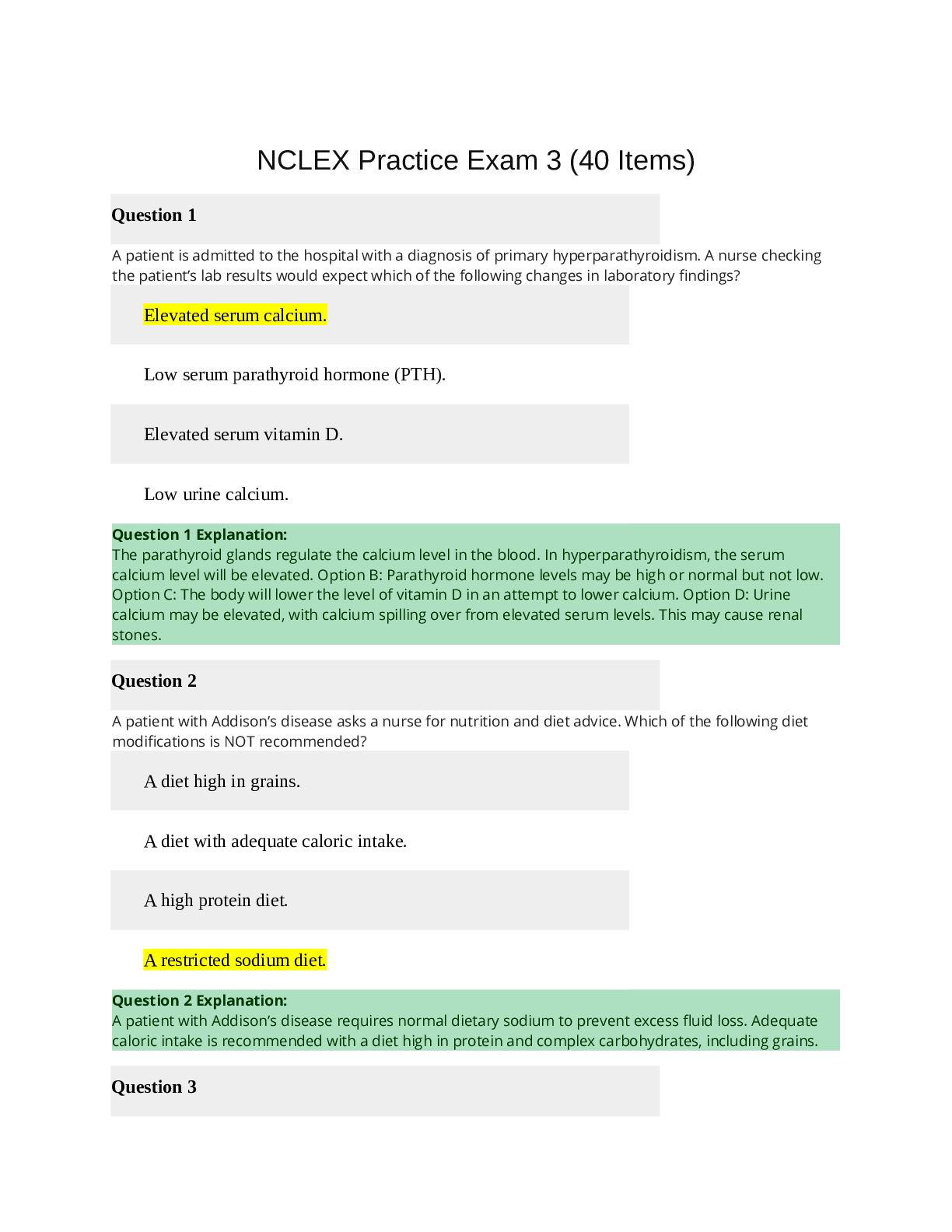
Reviews( 0 )
Document information
Connected school, study & course
About the document
Uploaded On
May 10, 2022
Number of pages
20
Written in
Additional information
This document has been written for:
Uploaded
May 10, 2022
Downloads
0
Views
60



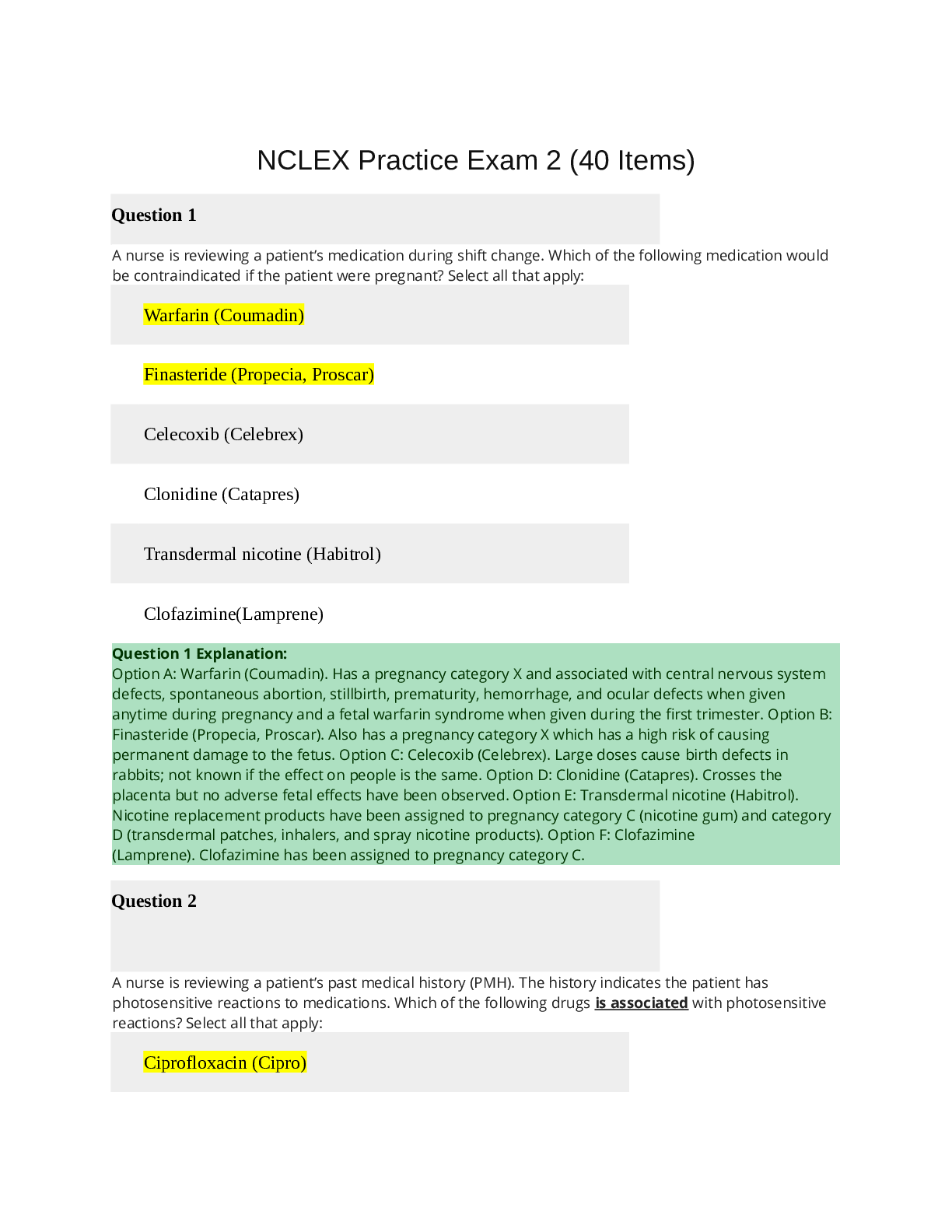
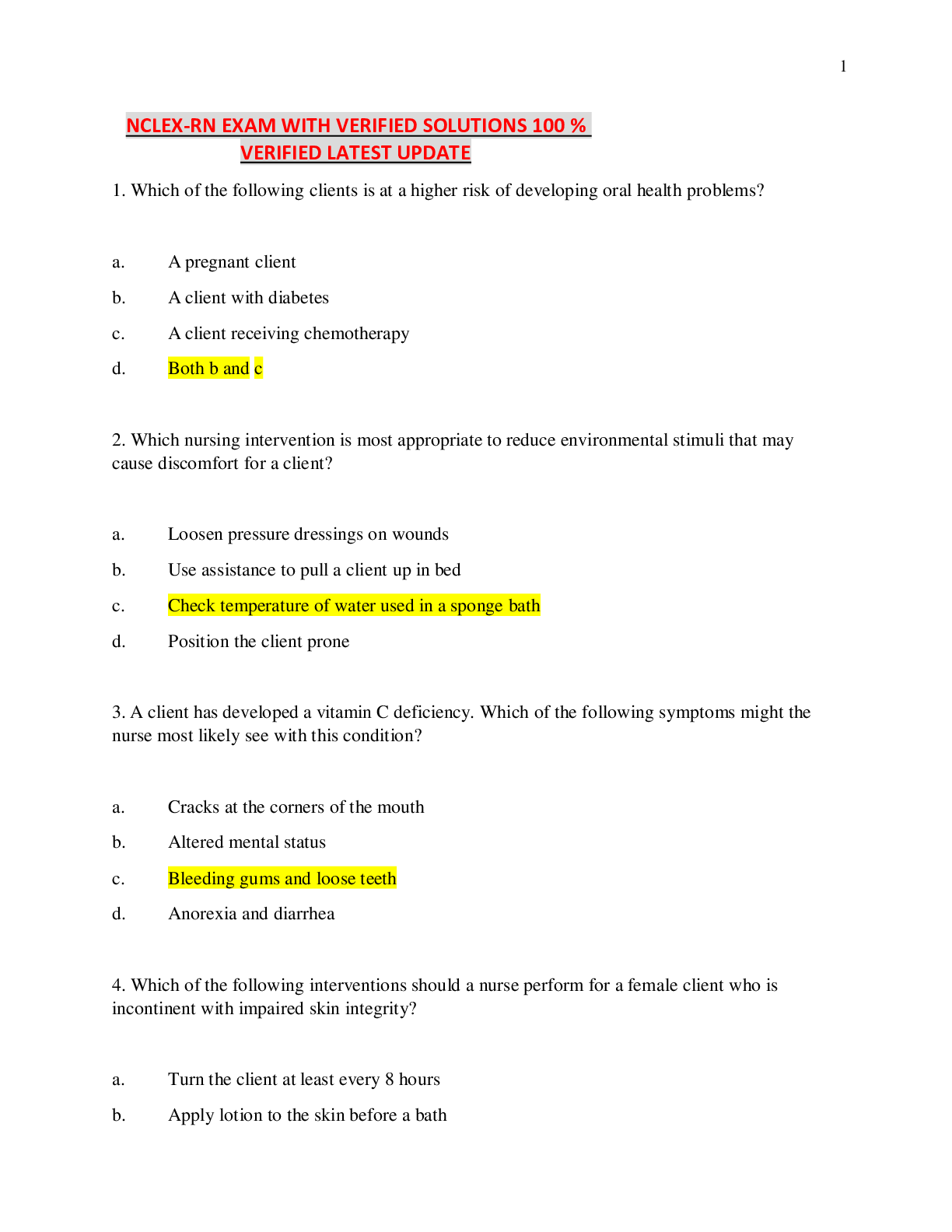
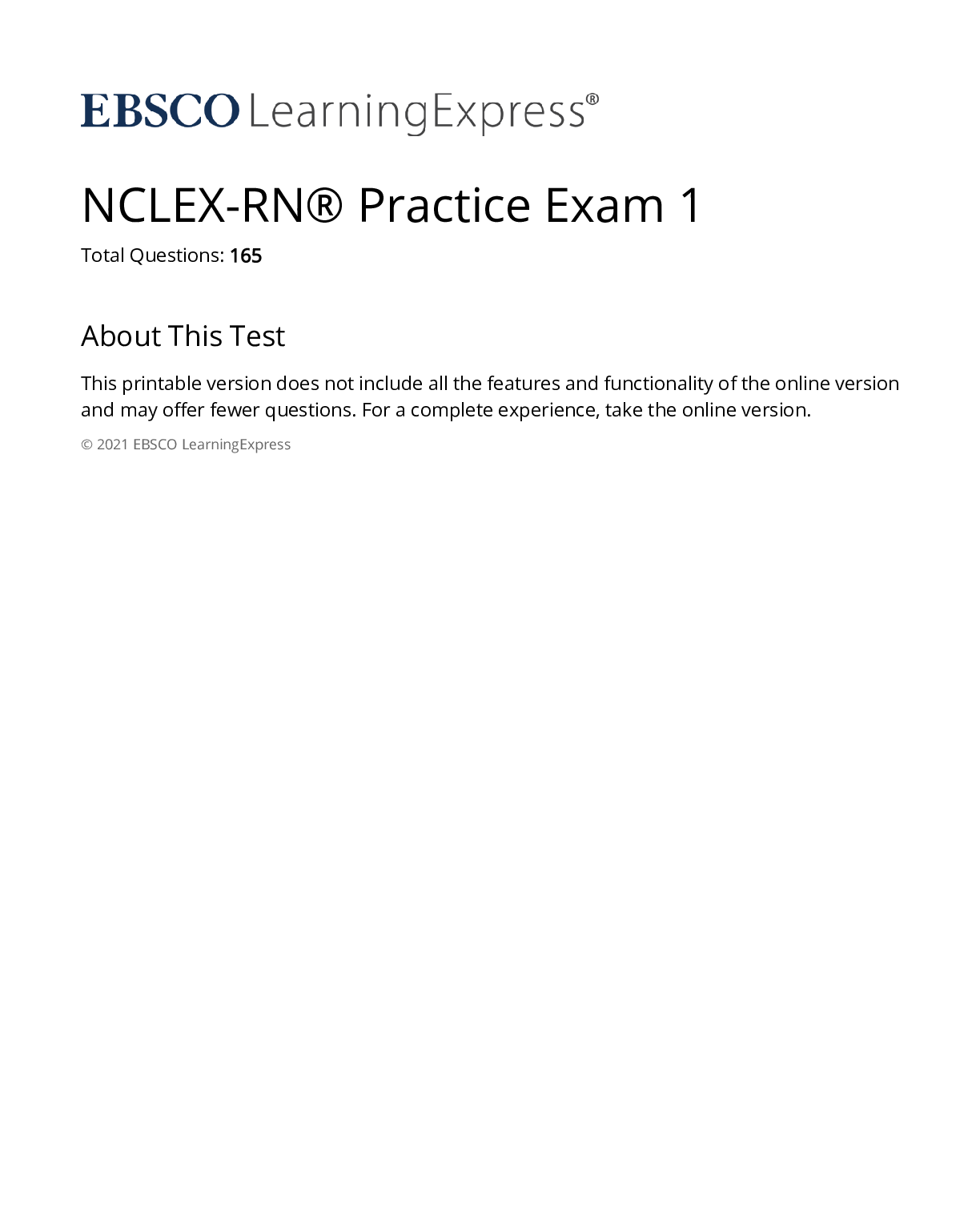

 (1).png)

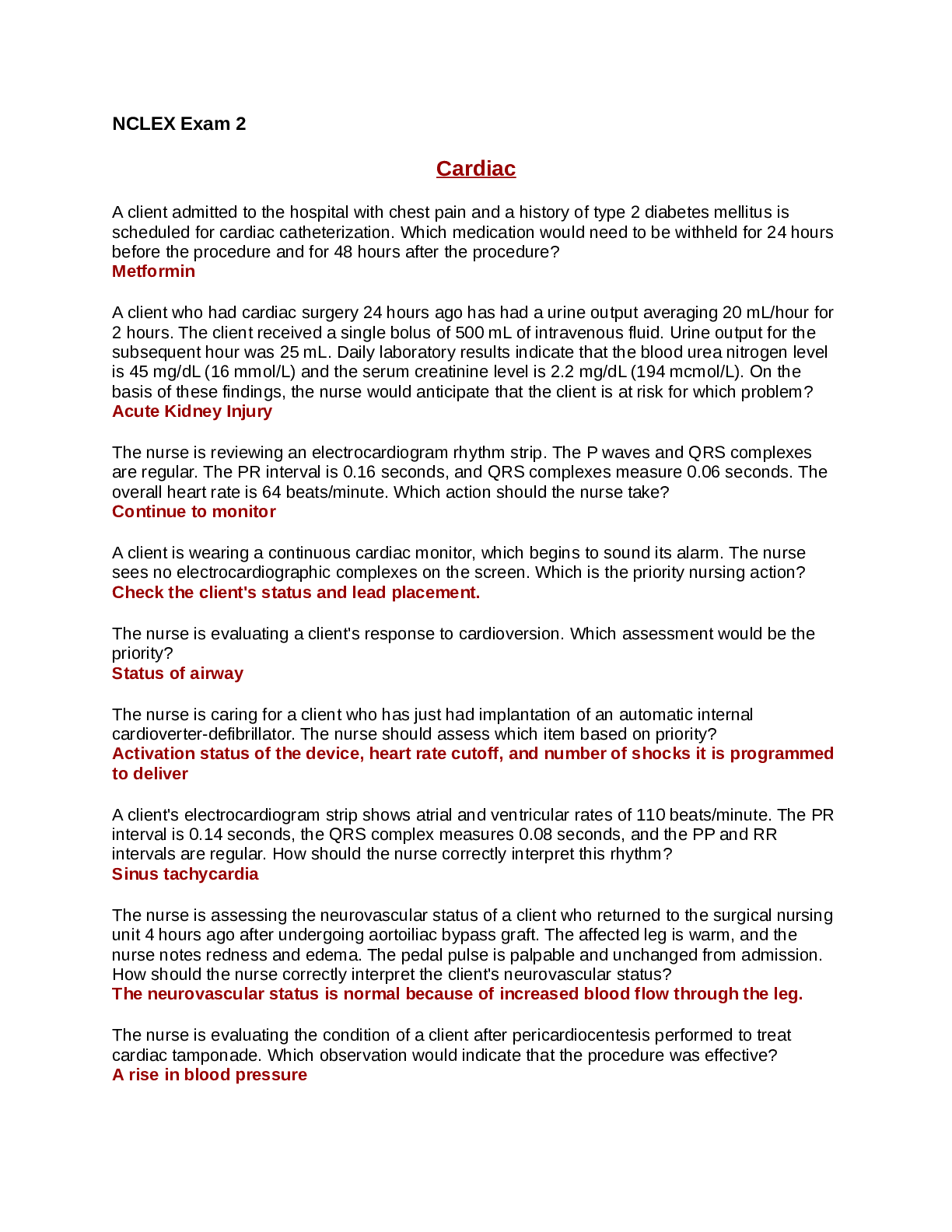
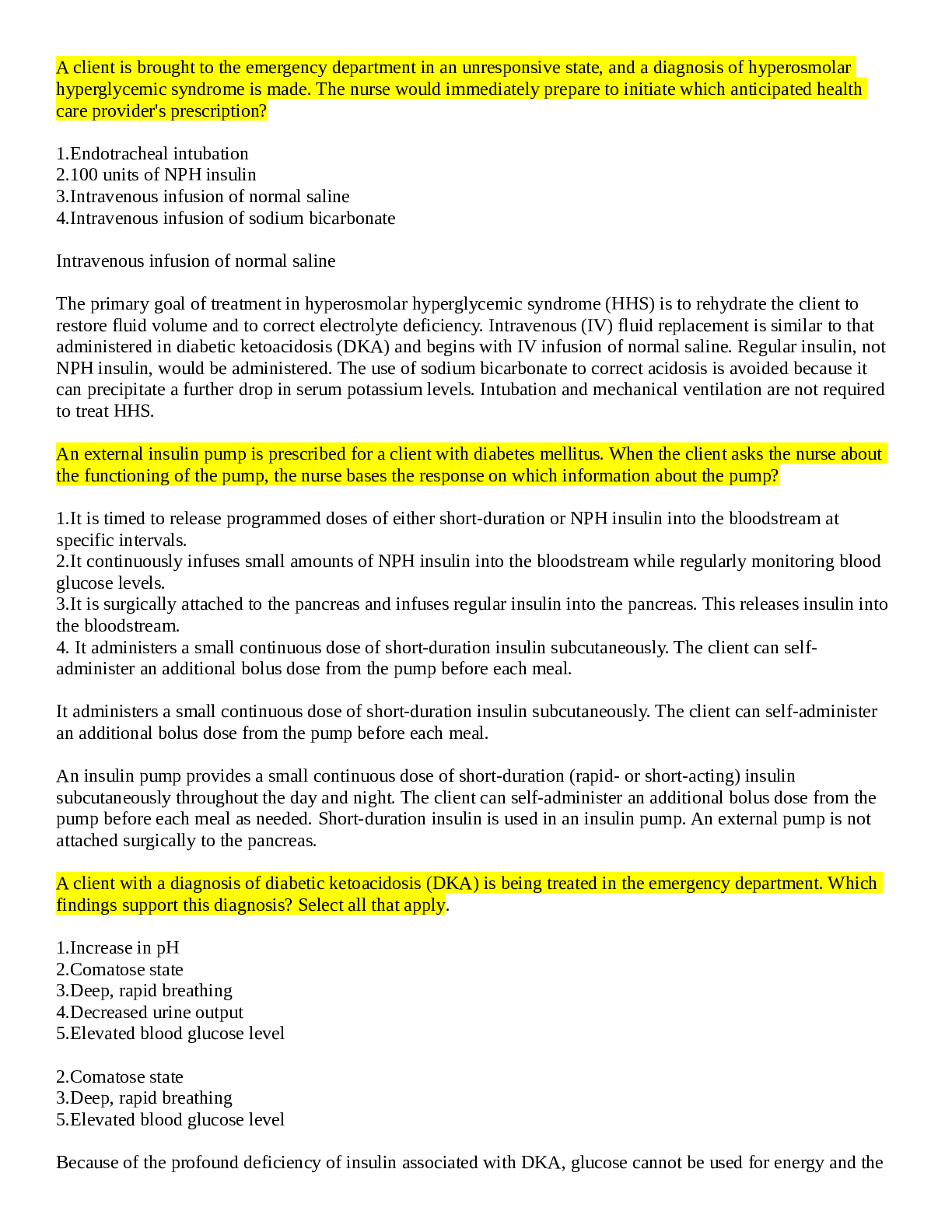
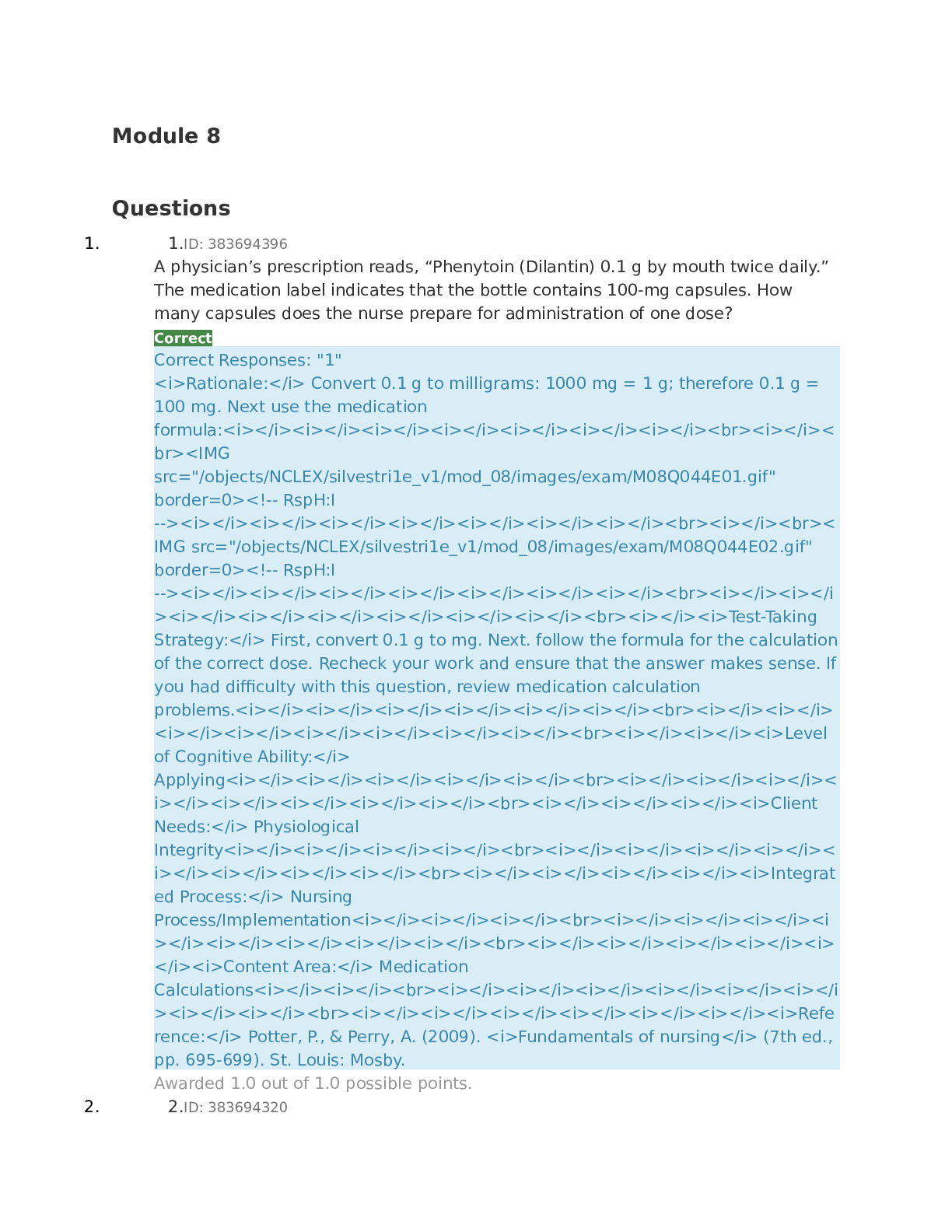
.png)
.png)

